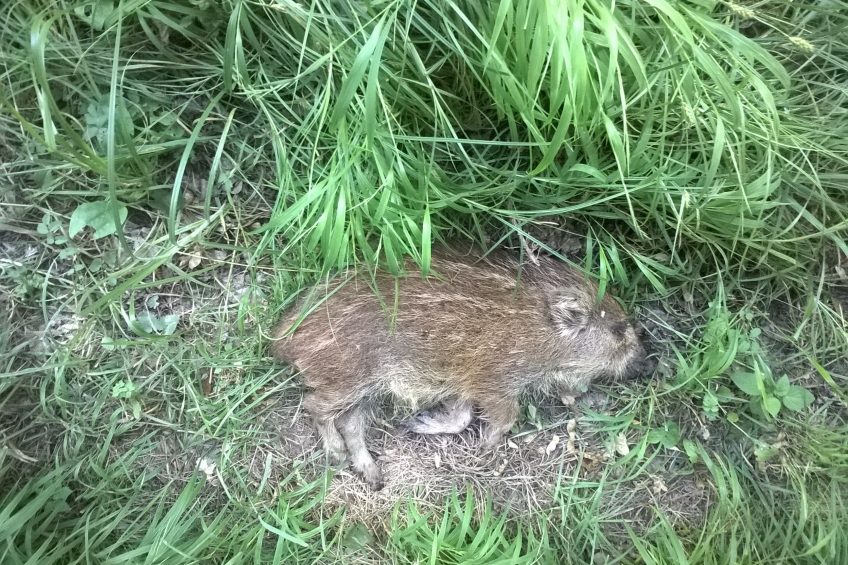ASF Belgium: 1 more carcass; 13 countries ban imports

One more infected wild boar carcass has been found in the forests of southern Belgium, bringing the total of ASF affected animals to 8, in 4 different locations around the same village. In the meantime, 13 non-EU countries have (partly) banned pig or pork imports from Belgium.
Belgium confirmed the 1st outbreak of African Swine Fever (ASF) amongst their wild boar population on September 13. The carcasses were discovered near Étalle, in the far south of the country, close to both the borders of Luxembourg and France.

Read more on ASF in the Pig Progress Health Tool
Latest update from agricultural ministry
Ever since, there have been 3 more reports of findings. The latest update came from Walloon agricultural minister René Collin, on September 20, who confirmed that 1 dead animal had tested positive, after having been found on September 16.
Numbers of total animals being found vary slightly in the diverse media. At Pig Progress, we choose to follow, as much as possible, official numbers reported to the World Organization for Animal Health (OIE) or communicated to the European Commission. As not all information is supplied through official channels immediately, we will follow local media as well for the latest updates.
Everything is summarised in the map below, including the source of every reported finding.
13 countries ban Belgian pig or pork products
In the meantime, a total of 13 countries have temporarily (partly) banned the transport of live pigs and pork products from Belgium to their country.
These are all countries outside the European Union, being South Korea, China, Taiwan, Belarus, Mexico, the Philippines, Japan, South Africa, Singapore, Uruguay, Australia and Malaysia. Restrictions are said to vary from country to country, where some only blocked by-products rather than meat, in other cases live pigs cannot exported there.

Read more on Belgium’s pig business in the Pig Progress Country Focus Tool
Exact details about previous ASF cases
More details have now also become known about the earlier ASF cases in Belgium. Earlier this week, the country’s Federal Agency for the Safety of the Food Chain (FASFC) reported details about what happened at the meeting of the European Commission’s Standing Committee on Plants, Animals Food and Feed (PAFF).
The 1st case was found on 3 adult wild boar on Sunday, September 9, with carcasses being in an advanced state of decomposition. The dead animals were transported to the University of Liège, Belgium and samples were sent to the country’s National Reference Lab for testing. On September 13, this was confirmed positive.
Want to know everything on ASF? Check our dedicated ASF page
One day later, on September 10, the 2nd case followed: a young, weakened wild boar was shot in the same area. This animal was also transported to the University of Liège, and sample testing confirmed the ASF virus as well.
On Thursday, September 13, a 3rd discovery was made, again in the same area. This again was a discovery of 3 dead wild boar in an advanced state of decomposition. Here, the confirmation was received on September 15 that it was all about ASF.
Measures inside the infected zone
All outbreaks, as well as the ‘infected zone’ that was created as a result of the outbreaks, are captured in the interactive map above. The infected zone, indicated with an orange border, covers an area of 63,000 ha (156,000 acres) and has been put in place according to EU legislation. It will continue to exist for 24 months. Hunting is forbidden here and members of the public have been asked not to leave the main roads or enter forests.
With regard to swine farms in the infected area, the measures include:
- Inventory of pig herds;
- No outdoor access or effective double fencing;
- No contact with possibly contaminated feed, utensils, etc.;
- No transport in/out of pigs without prior authorisation
Relatively few pig farms in infected zone
The FASFC reported that there are relatively few pig farms in the affected area; the density of wild boar in the direct surroundings is higher, see below.
Apart from increased awareness for ASF through newsletters, the national measures include a ban of all assemblies including pigs, no farm visits if unnecessary, pigs need to go through quarantine before introduction and an increased surveillance as no sick pig can be treated without sampling for ASF.
Where did the ASF infection come from?
In the meantime, in Belgian media, speculations have risen about the origin of the ASF infection in the wild boar in southern Belgium. RTL.be reported that hunters have accused other hunters of illegally transporting wild boar from Eastern Europe to his own domain, allegedly for trophy hunting purposes. An allegation which in turn was denied.












